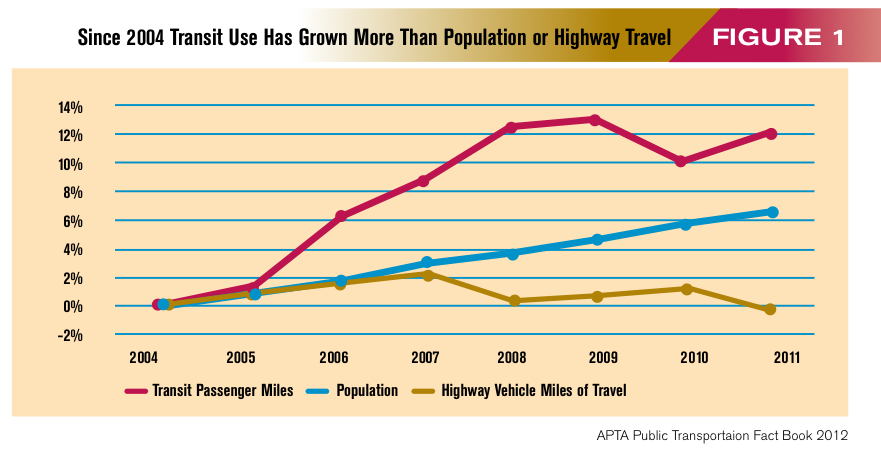AMERICAN PUBLIC TRANSPORTATION ASSOCIATION
Introduction
This report focuses on the issues critical to private investors as they consider the public transportation industry as an investment destination.
Public transportation is a $57 billion industry in the United States. Public transportation itself includes a broad, interconnected set of modes including local and commuter bus service, subways, paratransit, light rail, streetcars, commuter rail, bus rapid transit, and high-performance intercity passenger rail. It provides essential public benefits, and accordingly receives support from government. At the same time, public transportation is an attractive market for business partnerships, and such relationships have always been present on both capital and operating functions.
This report provides facts and data detailing why public transportation is an attractive market for both public and private investment. It is a market supported by growing demand, and one certain to be bolstered by forward-looking societal trends.
Although growth over the past three decades has been steady, long-term economic and social trends (population, energy, public choice, and a generational shift in travel behavior) point to still more rapid growth in the future. The number of and the expanse of rail and bus fixed-guideway systems has grown exponentially since 1980, and a pipeline of projects is positioned to become the next generation of investment. These investments provide the public with more and improved public transportation choices, and appeal to all segments of the population. Investment from all levels of government is on a long-term upward trend, and public support for public transportation can be measured through increases in ridership and through public approval of transit ballot measures.
Between 2000 and 2012, more than 72 percent of the 457 transit ballot measures over that 12 year period were approved by voters, with such approval consistent across regions of the country and across party affiliations. In 2012, voters approved 49 of 62 (or 79 percent) of transit ballot measures across the country.
High-performance intercity passenger rail continues to be popular in the United States. Recent polling conducted by APTA found that two-thirds of Americans support it. This support rises to three-fourths among those polled in the 18-24 age bracket indicating that support for high- performance passenger rail will actually increase as the millennial Generation grows in relative size and begins to assert its policy priorities.
The market certainty provided by a federal surface transportation authorization bill is critical to attracting local, state, and private-sector investment. In June 2012, the U.S. Congress approved legislation to reauthorize federal programs supporting public transportation and highways through September 2014. While funding is only slightly higher (FY 2013: $10.6 billion; FY 2014: $10.7 billion), this represents a high watermark in federal funding for public transportation. Additionally, this legislation passed with strong bipartisan, bicameral majorities in the context of a Congress that was not agreeing on much else. The legislation (Moving Ahead for Progress in the 21st Century, or MAP-21) extends the 18.4 cents per gallon federal gas tax through 2016, and provides additional funding to stabilize the federal Highway Trust Fund and its Mass Transit Account. The legislation was signed into law on July 6, 2012. APTA and the public transit industry are working closely with members of Congress and the Administration on the next bill.
Download full report (PDF): Open for Business
About the American Public Transportation Association
www.apta.org
“To strengthen and improve public transportation, APTA serves and leads its diverse membership through advocacy, innovation and information sharing. APTA and its members and staff work to ensure that public transportation is available and accessible for all Americans in communities across the country.”







 RSS Feed
RSS Feed